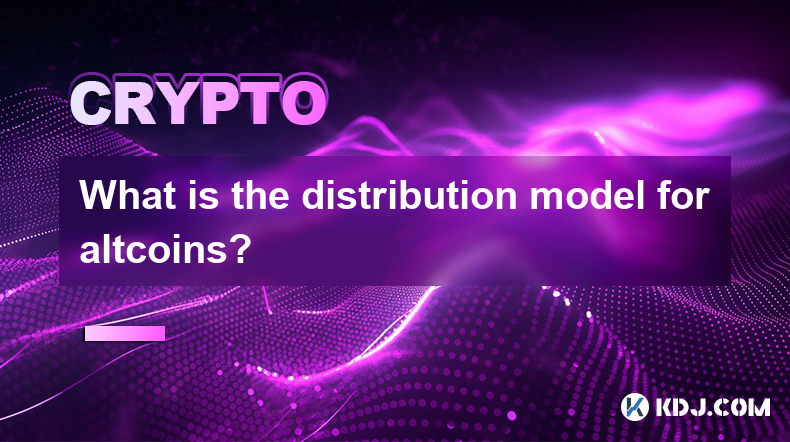-
 Bitcoin
Bitcoin $107,965.5977
-1.49% -
 Ethereum
Ethereum $2,537.2130
-1.84% -
 Tether USDt
Tether USDt $1.0000
-0.01% -
 XRP
XRP $2.2608
-0.71% -
 BNB
BNB $659.3980
-0.36% -
 Solana
Solana $148.7394
-2.41% -
 USDC
USDC $1.0000
0.01% -
 TRON
TRON $0.2873
-0.36% -
 Dogecoin
Dogecoin $0.1679
-4.64% -
 Cardano
Cardano $0.5763
-2.71% -
 Hyperliquid
Hyperliquid $37.4767
-6.61% -
 Bitcoin Cash
Bitcoin Cash $496.1888
-0.42% -
 Sui
Sui $2.8545
-3.01% -
 Chainlink
Chainlink $13.2532
-2.61% -
 UNUS SED LEO
UNUS SED LEO $9.0537
0.09% -
 Stellar
Stellar $0.2467
-2.27% -
 Avalanche
Avalanche $17.8240
-3.64% -
 Shiba Inu
Shiba Inu $0.0...01160
-2.60% -
 Toncoin
Toncoin $2.7443
-3.31% -
 Hedera
Hedera $0.1560
-2.71% -
 Litecoin
Litecoin $85.9596
-2.27% -
 Monero
Monero $315.7623
-2.23% -
 Dai
Dai $1.0000
-0.01% -
 Polkadot
Polkadot $3.3513
-2.20% -
 Ethena USDe
Ethena USDe $1.0001
0.03% -
 Bitget Token
Bitget Token $4.2992
-3.24% -
 Uniswap
Uniswap $7.3735
-1.54% -
 Aave
Aave $278.5274
-3.41% -
 Pepe
Pepe $0.0...09849
-3.52% -
 Pi
Pi $0.4560
-3.35%
What is the distribution model for altcoins?
2025/01/06 21:23

Key Points:
Understanding Altcoin Distribution Models:
- Defining altcoins and their significance
- Identifying various distribution models employed by altcoin projects
Types of Altcoin Distribution Models:
- ICOs (Initial Coin Offerings)
- IDOs (Initial DEX Offerings)
- IEOs (Initial Exchange Offerings)
- Airdrops
- Staking
Factors Influencing Altcoin Distribution Models:
- Project goals and target audience
- Market conditions and regulatory considerations
Advantages and Disadvantages of Different Models:
- Pros and cons of each distribution model for both projects and investors
Case Studies of Successful Altcoin Distributions:
- Notable examples of effective altcoin distribution strategies
Choosing the Right Distribution Model for Your Project:
- Considerations and guidance for selecting an appropriate model
FAQs on Altcoin Distribution Models:
- Answering common questions about altcoin distribution
What is the distribution model for altcoins?
Understanding Altcoin Distribution Models
Altcoins, alternative cryptocurrencies to Bitcoin, have emerged as a significant force in the cryptocurrency landscape. One crucial aspect of altcoin projects is their distribution model, which determines how the tokens are distributed to the public. Understanding these models is essential for investors to make informed decisions and for project teams to effectively manage their tokenomics.
Types of Altcoin Distribution Models
- ICO (Initial Coin Offering): ICOs involve issuing tokens directly to the public in exchange for fiat currencies or popular cryptocurrencies like Bitcoin and Ethereum. Investors participate in ICOs during a predefined window, and tokens are distributed after the conclusion of the sale.
- IDO (Initial DEX Offering): Similar to ICOs, IDOs are conducted on decentralized exchanges (DEXs), eliminating the need for intermediaries. Investors connect their wallets to the DEX and participate directly in the token sale, providing greater transparency and potentially lower barriers to entry.
- IEO (Initial Exchange Offering): IEOs leverage established cryptocurrency exchanges to facilitate token sales. Exchange platforms review and list projects on their platforms, acting as gatekeepers and providing increased legitimacy. IEOs typically offer investors a wider reach and potentially higher visibility.
- Airdrops: Airdrops involve distributing free tokens to specific wallet addresses or those who meet certain criteria, such as holding a particular cryptocurrency or participating in community activities. Airdrops are often used to generate awareness and promote the project's adoption.
- Staking: Staking is a distribution method that rewards individuals who hold and support the project's blockchain network. Token holders stake their tokens in designated pools, validating transactions and securing the network. In return, they receive additional tokens as rewards for their contributions.
Factors Influencing Altcoin Distribution Models
Several factors influence the choice of distribution model for an altcoin project:
- Project Goals and Target Audience: The project's goals and the target audience will determine the most suitable distribution model. ICOs and IEOs may be better suited for large-scale capital raising, while airdrops and staking could be effective for community engagement and decentralized distribution.
- Market Conditions and Regulatory Considerations: Market conditions and regulatory frameworks can also impact distribution decisions. During favorable market conditions, projects may opt for ICOs or IEOs to maximize fundraising. Regulatory considerations can vary depending on the jurisdiction, with some countries imposing restrictions on certain distribution models.
Advantages and Disadvantages of Different Models
Each distribution model offers unique advantages and disadvantages for both projects and investors:
- ICOs: Advantages - flexibility and high fundraising potential; Disadvantages - unregulated and potential for fraud
- IDOs: Advantages - lower barriers to entry and access to decentralized marketplaces; Disadvantages - liquidity constraints and DEX vulnerabilities
- IEOs: Advantages - enhanced credibility and wider reach; Disadvantages - higher fees and potential influence by exchanges
- Airdrops: Advantages - free token distribution and community building; Disadvantages - potential for worthless tokens and limited control over distribution
- Staking: Advantages - rewards for token holders and network support; Disadvantages - requires a significant investment and potential for inflation
Case Studies of Successful Altcoin Distributions
- Ethereum: ETH was distributed through an ICO in 2014, raising over 18 million ETH. The project adopted a crowdfunded distribution model that allowed investors to participate at varying levels.
- Binance Coin (BNB): BNB was launched through an ICO in 2017, raising 15 million USD. Binance implemented a tiered distribution system, with different tranches available for different contribution amounts.
- Uniswap (UNI): UNI was distributed through an airdrop to users who had interacted with the Uniswap platform. The airdrop effectively engaged the community and contributed to the project's success.
Choosing the Right Distribution Model for Your Project
Selecting the appropriate distribution model for an altcoin project requires careful consideration:
- Evaluate Project Goals: Clearly define the project's objectives and determine which distribution model aligns with them.
- Assess Target Audience: Identify the target audience for the project and choose a model that appeals to their interests and preferences.
- Consider Market Conditions: Analyze market trends and regulatory landscapes to determine the most suitable time and approach for token distribution.
- Weigh Advantages and Disadvantages: Carefully evaluate the pros and cons of each distribution model and assess their implications for the project.
- Seek Legal and Professional Advice: Consult with legal professionals and financial experts to ensure compliance and mitigate risks.
FAQs on Altcoin Distribution Models
Q: What is the best distribution model for altcoin projects?
- A: The optimal distribution model depends on individual project goals and market conditions.
Q: How do you evaluate the success of an altcoin distribution model?
- A: Success metrics include successful capital raising, community engagement, and long-term token value appreciation.
Q: Are there any regulatory concerns associated with altcoin distribution models?
- A: Regulations vary by jurisdiction, but potential concerns include securities laws and anti-money laundering measures.
Q: How do I participate in an altcoin distribution?
- A: Participation methods vary depending on the distribution model, but typically involve purchasing tokens during ICOs or IDOs or claiming airdropped tokens.
Q: What are the risks associated with altcoin distribution models?
- A: Risks include volatility, potential for fraud, and regulatory non-compliance.
免責聲明:info@kdj.com
所提供的資訊並非交易建議。 kDJ.com對任何基於本文提供的資訊進行的投資不承擔任何責任。加密貨幣波動性較大,建議您充分研究後謹慎投資!
如果您認為本網站使用的內容侵犯了您的版權,請立即聯絡我們(info@kdj.com),我們將及時刪除。
- 模因硬幣,早期投資,拋物線增長:捕捉波浪
- 2025-07-08 22:30:12
- 加密,機構,BTC&ETH:新時代黎明
- 2025-07-08 22:30:12
- Bitcoin Solaris Market Launch: A New Dawn or Just Another Altcoin?
- 2025-07-08 20:30:12
- Bitcoin, Memecoin Mania, and the All-Time High Hunt: What's Next?
- 2025-07-08 20:30:12
- Byrq Coin: Scam or Savior? A Deep Dive Review
- 2025-07-08 20:50:12
- Shiba Inu's Burn Rate Bonanza: Can Crypto Burns Ignite a Price Rally?
- 2025-07-08 20:50:12
相關知識

How to customize USDT TRC20 mining fees? Flexible adjustment tutorial
2025-06-13 01:42:24
<h3>Understanding USDT TRC20 Mining Fees</h3><p>Mining fees on the TRON (TRC20) network are essential for processing transactions. U...

USDT TRC20 transaction is stuck? Solution summary
2025-06-14 23:15:05
<h3>Understanding USDT TRC20 Transactions</h3><p>When users mention that a USDT TRC20 transaction is stuck, they typically refer to ...

How to cancel USDT TRC20 unconfirmed transactions? Operation guide
2025-06-13 23:01:04
<h3>Understanding USDT TRC20 Unconfirmed Transactions</h3><p>When dealing with USDT TRC20 transactions, it’s crucial to understand w...

How to check USDT TRC20 balance? Introduction to multiple query methods
2025-06-21 02:42:53
<h3>Understanding USDT TRC20 and Its Importance</h3><p>USDT (Tether) is one of the most widely used stablecoins in the cryptocurrenc...

What to do if USDT TRC20 transfers are congested? Speed up trading skills
2025-06-13 09:56:41
<h3>Understanding USDT TRC20 Transfer Congestion</h3><p>When transferring USDT TRC20, users may occasionally experience delays or co...

The relationship between USDT TRC20 and TRON chain: technical background analysis
2025-06-12 13:28:48
<h3>What is USDT TRC20?</h3><p>USDT TRC20 refers to the Tether (USDT) token issued on the TRON blockchain using the TRC-20 standard....

How to customize USDT TRC20 mining fees? Flexible adjustment tutorial
2025-06-13 01:42:24
<h3>Understanding USDT TRC20 Mining Fees</h3><p>Mining fees on the TRON (TRC20) network are essential for processing transactions. U...

USDT TRC20 transaction is stuck? Solution summary
2025-06-14 23:15:05
<h3>Understanding USDT TRC20 Transactions</h3><p>When users mention that a USDT TRC20 transaction is stuck, they typically refer to ...

How to cancel USDT TRC20 unconfirmed transactions? Operation guide
2025-06-13 23:01:04
<h3>Understanding USDT TRC20 Unconfirmed Transactions</h3><p>When dealing with USDT TRC20 transactions, it’s crucial to understand w...

How to check USDT TRC20 balance? Introduction to multiple query methods
2025-06-21 02:42:53
<h3>Understanding USDT TRC20 and Its Importance</h3><p>USDT (Tether) is one of the most widely used stablecoins in the cryptocurrenc...

What to do if USDT TRC20 transfers are congested? Speed up trading skills
2025-06-13 09:56:41
<h3>Understanding USDT TRC20 Transfer Congestion</h3><p>When transferring USDT TRC20, users may occasionally experience delays or co...

The relationship between USDT TRC20 and TRON chain: technical background analysis
2025-06-12 13:28:48
<h3>What is USDT TRC20?</h3><p>USDT TRC20 refers to the Tether (USDT) token issued on the TRON blockchain using the TRC-20 standard....
看所有文章

























































































